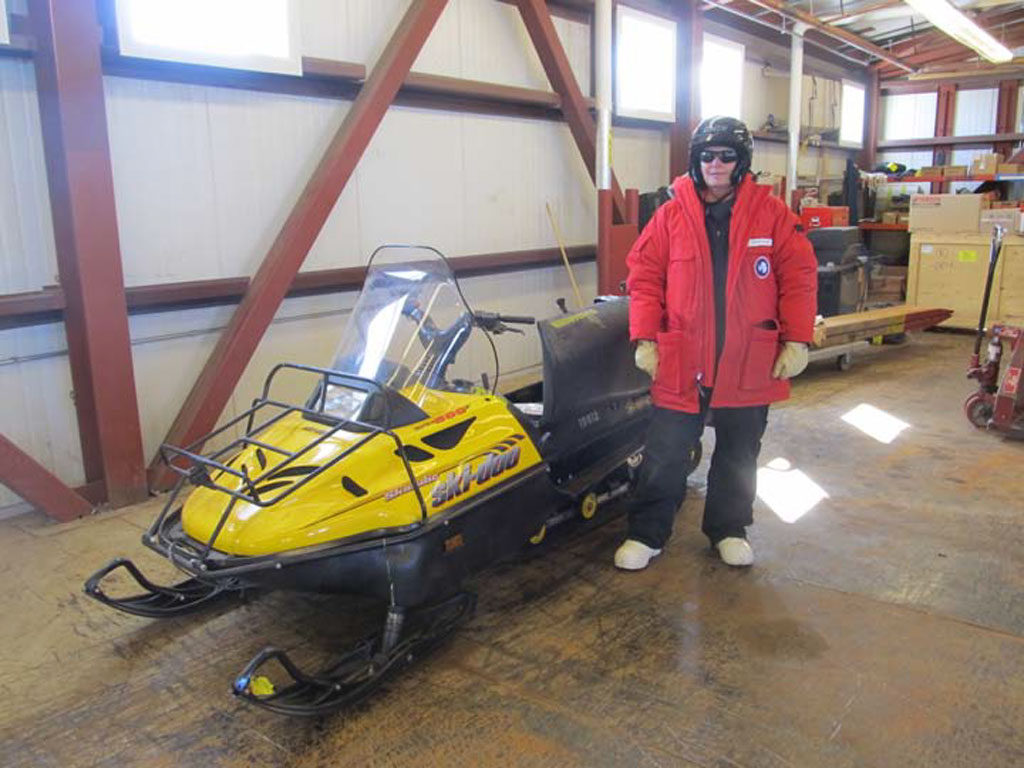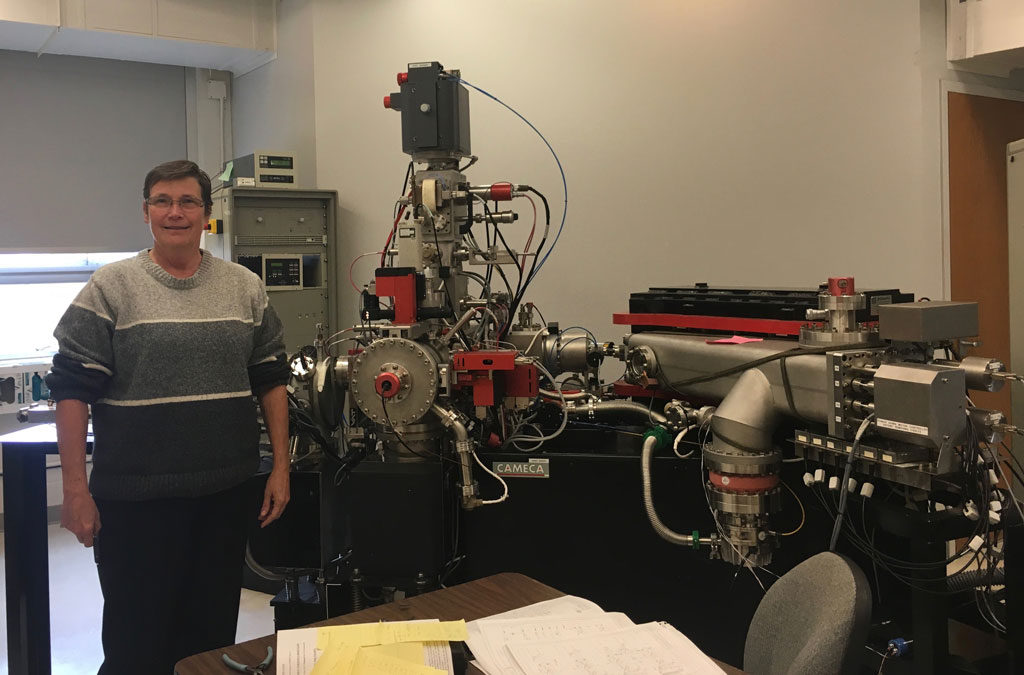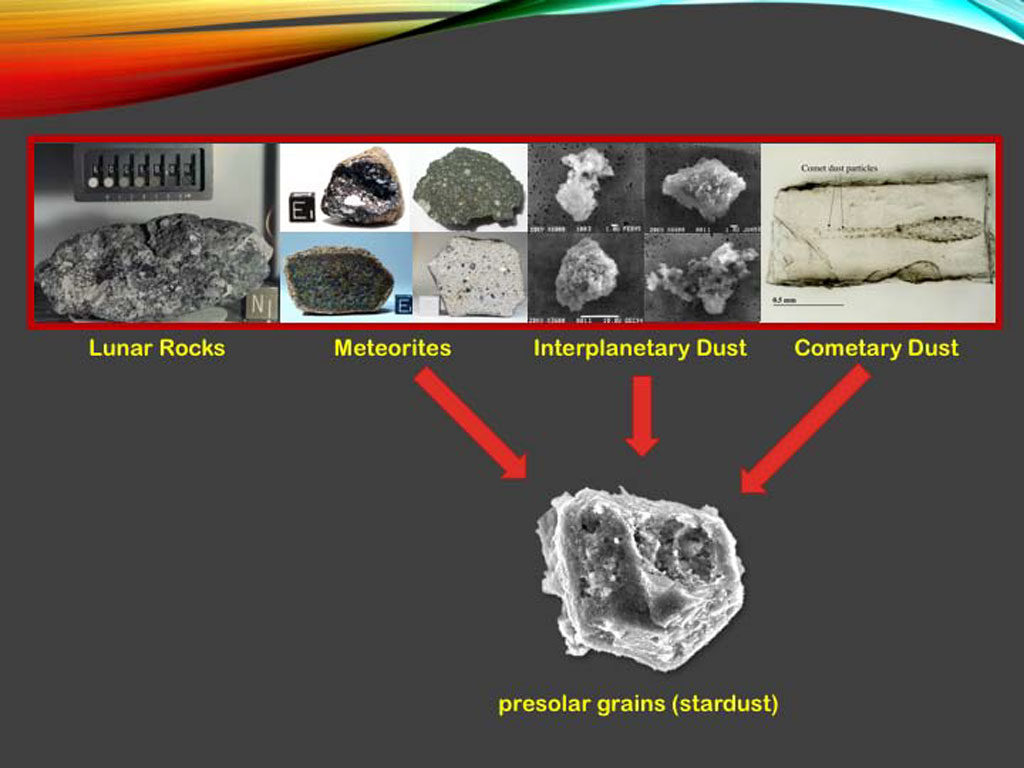This blog piece on Dr. Christine Floss was completed days before her sudden death. It only covers part of her research into the origin of the solar system, but tries to give a sense of the excitement she had in piecing together a picture of our neighborhood in the galaxy just before the formation of our solar system.
When she was first offered the chance to go to Antarctica on a NASA-sponsored expedition to collect meteorites, Christine Floss turned it down. She had children at home, and camping on ice was not on her bucket list. But three years ago NASA invited her again, and her now grown daughters convinced her that she would regret missing the experience.
Floss, a Research Professor of Physics at Washington University, can usually be found in her laboratory working with some of the world’s most advanced instruments to analyze tiny ancient mineral fragments on an atomic level. Her lab is a center for the study of extremely rare samples of the dust cloud that formed our solar system. These presolar grains are occasionally found incorporated into primitive meteorites.
The Antarctic Search for Meteorites (ANSMET) is an annual event that NASA has sponsored since the 1970’s. The aim is to collect as many meteorites of all kinds as possible. “It is a service project, “ explains Floss.
For about a month she and seven fellow adventurers slept in an unheated tent, cooked frozen rations on a Coleman stove in the tent, and spent their days riding Ski-Doos on the blue glacial ice looking for meteorites. Sometimes they would walk the glacial moraines, also rich sources of rocks from outer space. It was one of the high points of her life, she says, even though there was plenty of grousing about the uncomfortable conditions at the time.

Meteorites do not fall more frequently into the Antarctic ice than anyplace else on earth, but the ice protects them from weathering. Then, glacial flow can concentrate the meteorites against barriers like mountains, and sublimation of the ice can bring very old meteorites to the surface.
The collected meteorites are taken to the Johnson Space Center, where they are analyzed, classified, processed into thin sections, and catalogued. Scientists can request a specific sample.
A happy bonus for Floss from her Antarctic adventure is having in her lab a specimen from a meteorite that her group collected.
Some rare meteorites contain grains of solar system raw material
Dr. Floss and her colleagues in Washington University’s Laboratory for Space Science are interested in the composition of the dust and gas cloud that formed our solar system about 4 ½ billions years ago. She looks for meteorites that formed early in solar system history, and that were far enough away from the sun that they escaped the tremendous outpouring of heat energy that came with its birth as a star.
Within some of these very rare meteorites , in trace amounts, tiny grains of the original dust and gas cloud somehow survived solar system formation unchanged. Scientists refer to these grains as presolar.
These inclusions of solar system raw material are unfused, rather amorphous aggregates rather than crystals. They tend to be 200-300 nanometers—about 10 times larger than a virus but about 10 times smaller than a red blood cell. They look different.
They look different, but are they really different?
Presolar grains and ‘stardust’ particles look different because they are different chemically.
Floss is a geologist by training, and has been called a ‘cosmochemist.’ Her role in the Laboratory for Space Science is to analyze and characterize space rocks.
Her lab has analyzed rock samples brought back by Apollo 11 from the moon, from Mars missions, and from the tail of Comet Wild by NASA’s Stardust mission. From these samples, and from work by other scientists, she states that elements throughout our solar system have the same isotopic composition. For example, there are three stable isotopes of oxygen—O16, O17, and 018. In our solar system, O16 is about 99.67 %, O17 is about 0.04%, and O18 is about 0.2% of naturally occurring oxygen.
In stars, where elements are being formed through nuclear fusion, models predict that chemical elements will differ in the relative proportions of their isotopes.
As predicted, presolar material is characterized by enrichment or depletion of O17 and O18 relative to O16.
Floss uses a special mass spectrometer designed by her late husband, Frank Staderman, to measure the proportions of oxygen16, oxygen17, and oxygen18 in presolar silicates . (Silicates are minerals containing silicon and oxygen, and are the most abundant rocks on the earth’s crust and mantle. Quartz, feldspar, mica, olivine, and pyroxine are all silicates.) This instrument, the Nano-Sims, can measure the charge/mass ratio of oxygen isotopes in samples as small as 100 nanometers.

From the Nano-Sims measurements of O17/O16 and O18/O16 ratios, Floss can predict whether a grain originated from a red giant or a supernova. Stars are not forever. They ‘die’ by expanding into red giants, and then depending upon their size either shed material and collapse into white dwarfs or explode as supernovae. Whatever the particular fate, a dying star will send much material into space.
The gas cloud that formed our solar system probably contained contributions from hundreds if not thousands of stars whose lives had ended within perhaps 500 million years previously. (Floss explains that material from earlier explosions would probably have become damaged or destroyed in their journey through interstellar space. There is no way at this time to date presolar material)
Several hundred pieces of presolar material have now been analyzed for their isotopic compositions. The results are listed in a continually updated published list, and a picture of conditions in our portion of the galaxy at the time of solar system birth is emerging.
Floss calls her work ‘astronomy with a microscope rather than a telescope’. Analysis of these primitive grains is to astronomy what studies of the origin of life is to biologists. It’s a matter of answering the question “Where did we come from?”
This is the first in a series of self-published articles. To get an email whenever there’s a new blog post, use the Subscribe form in the left sidebar.
Have a topic you’d like me to explore? Use the Contact Me link in the left sidebar.

